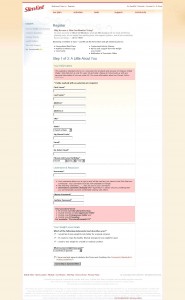Twitter Types
March 20th, 2009It has been some time since I last posted on Twitter. I have only used it for a few months but I feel like I can safely split Twitter into 4 types of Twitter users. The User, The Contributor, The Talker, The Streamer.
The Streamer is the Twitter user that feels like they need to post every update in their life. They use it like a combination of an Away Message and an IM to the world. The problem is that, on the whole, most people don’t care. And if they do, they probably already are in contact with you in some other way. The other defining characteristic of The Streamer is the frequency of updates. If The Streamer would only post once or twice a day then the Tweets could be interesting, even if they are just about general life. The problem arises when this is done with an annoyingly large frequency. Of course the threshold of annoyance will be different for different people so you will have to self-define that limit.
The Talker is the Twitter user that shares every link they come across if they can justify sharing it with a single follower and often times even when they can’t. They retweet as often as possible. Again, as is the case with The Streamer, each user will have their own threshold for how many retweets are too much. The Talker will also have conversations on Twitter that really should be done in a Direct Message or some other communication channel.
The Contributor is that perfect blend of everything. The Contributor shares only a few links, but great links. The Contributor will share helpful tips. The Contributor will share an interesting event in their life. But really, they only share the cream of the crop and will direct their tweets with DMs and @replies rather than full on blasts to all their followers.
The User is person that is following a ridiculously large amount of people. They are the user that only follows you hoping that you are a brainless sheep and will follow back even though you have no interest in what the person has to say.
Of course these are generalizations and things like TweetDeck help manage these sorts of things, but it would be nice just to have people use common sense. It makes it better for everyone involved.
People can’t read what you tweet if you are tweeting 20 times a day because they don’t have the time for that. Then multiply those 20 tweets by 50 followers and you start to see just how silly and, ultimately, less useful these people make Twitter.
Which Twitter user are you?
This has been a Thought From The Cake Scraps. If these posts interest you, follow @TheCakeScraps!
 Diamonds are not the only thing that is forever anymore. It is no secret that Google will dig deep and find things on a person that the person has long since forgot about. Individuals that are active on the internet are pumping out a HUGE amount of information that is then on electronic record.
Diamonds are not the only thing that is forever anymore. It is no secret that Google will dig deep and find things on a person that the person has long since forgot about. Individuals that are active on the internet are pumping out a HUGE amount of information that is then on electronic record. What do you see when you look at this picture? Do you see a game of Jenga nearly complete? Do you see a tower of block about to fall? Do you see the next block that you would take out and add on top? It all depends on your perception.
What do you see when you look at this picture? Do you see a game of Jenga nearly complete? Do you see a tower of block about to fall? Do you see the next block that you would take out and add on top? It all depends on your perception.

